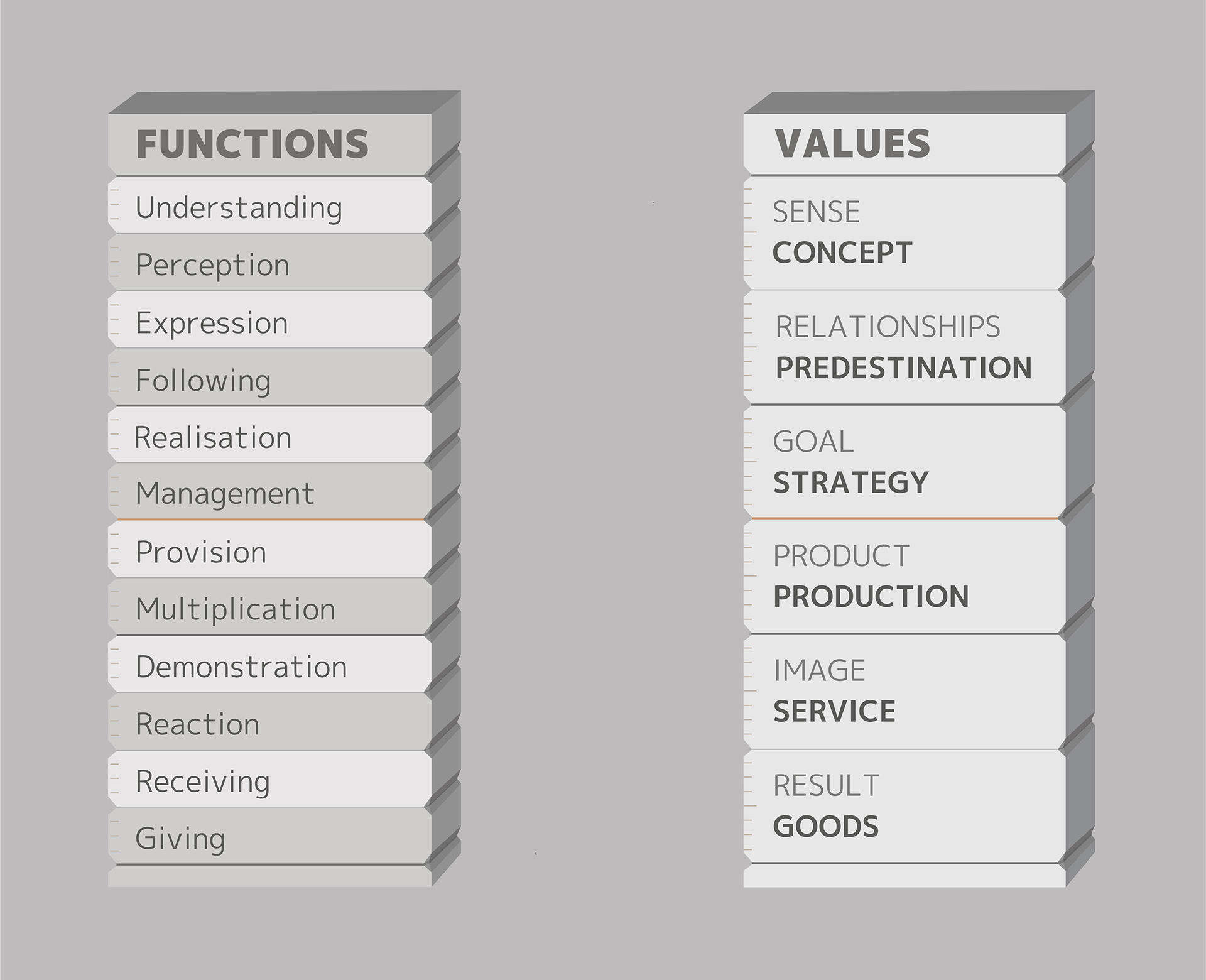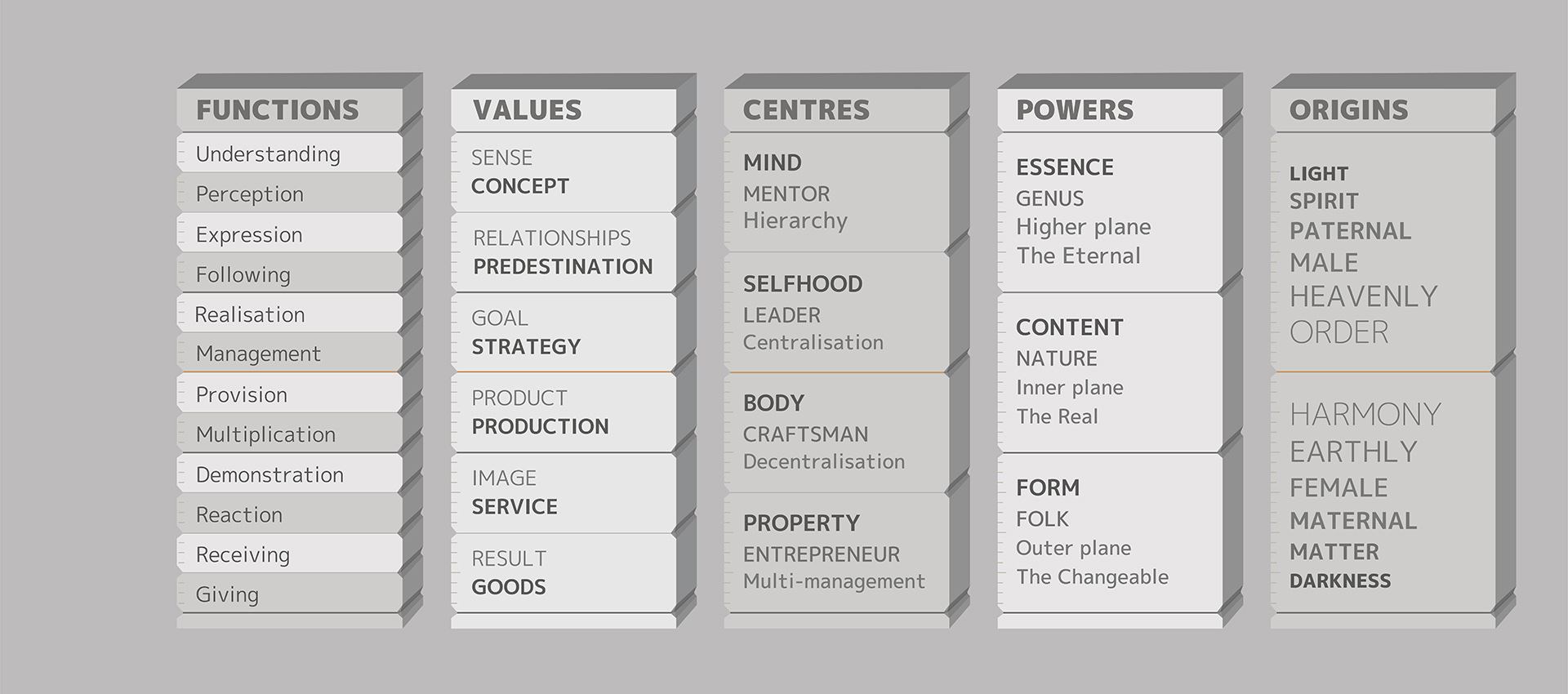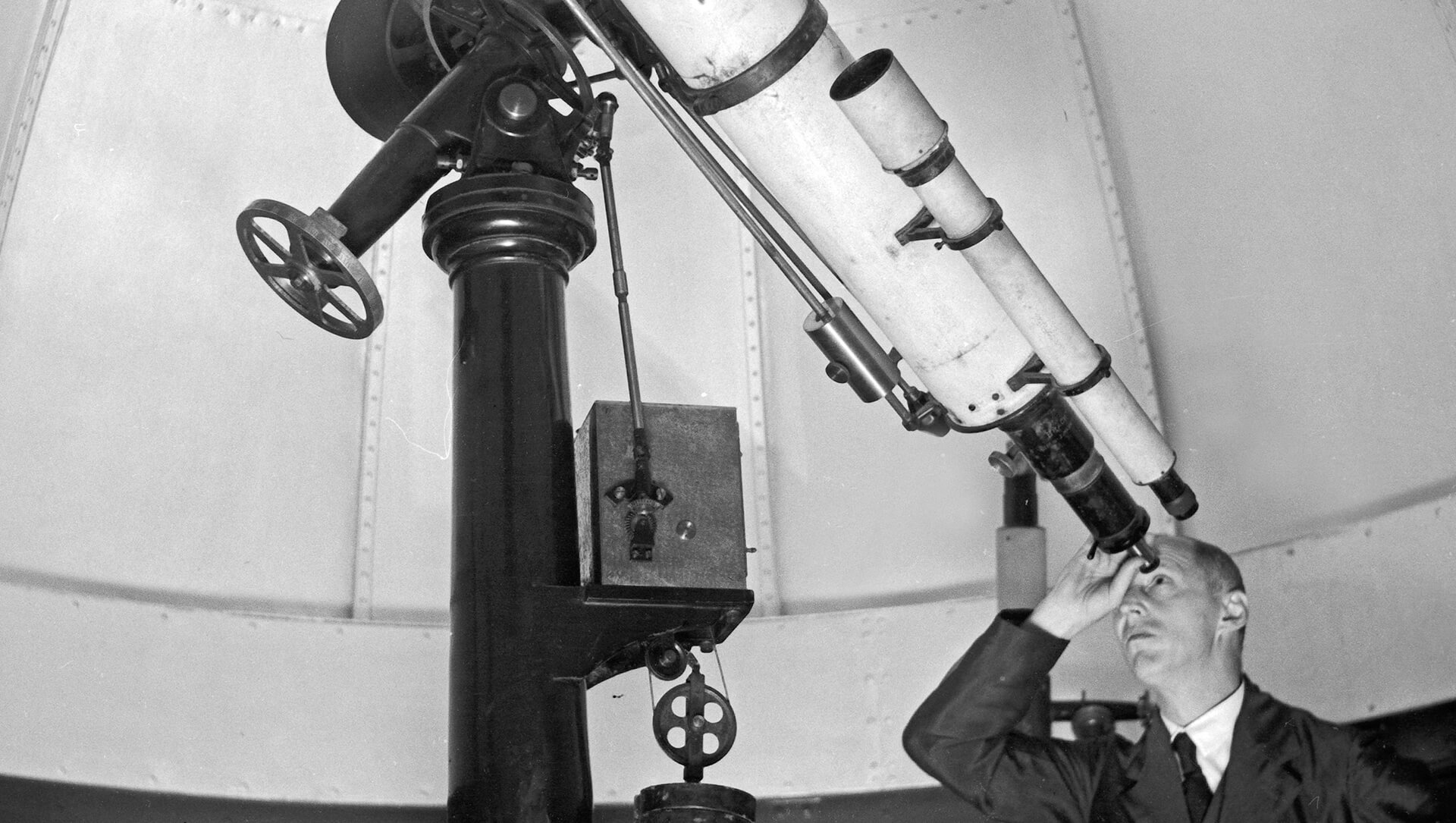SIX VALUES
Man himself is a value generated by the interaction of the essences of the Light and the Darkness that are beyond him, penetrating all planes of his existence and centres of his personality. In human functions, these two Principles are manifested in pairs — light (L), upper, and dark (D), lower one. Through the light function the observer radiates to the environment, through the dark one he absorbs the influence from outside.
So, for example, for “understanding” an individual is directed to move attention to the object of knowledge, thus radiating attention, while for “perception” he absorbs the influences of the environment.
In the process of creating his own value, a person endows it with functions that are congenial to him in terms of his abilities. These functions take on the role of two origins, however this time not for the individual, but for the value he created. In other words, to create value, he engages a pair of neighbouring functions — light and dark.

As a child of a man and a woman grows up and matures over time, so each of the six human values can exist in its simple, or elementary, state (Sense, Relationships, Goal...) or in a complex, systemic one (Concept, Predestination, Strategy...). Therefore, in the scale of values, we will denote each value by two names. Which of the names will be more appropriate to denote the value in a particular case depends on the person whose problem we are attempting to solve by using our approach.
UNIVERSAL SYSTEM OF MEASURES
All the above are the axioms of our approach. They are also eternal ideas, or truths, which can be ascertained by any researcher, being in the state of the observer. Visually, they can be represented as a system of scales that together form up a matrix.
The simplest scale of the matrix divides the vertical human body into twelve levels. The dimensions of the remaining scales correspond to the divisors of this number: 2, 3, 4 and 6. This means that in a complete and integral system of twelve elements, the divisor numbers also distinguish integral subsystems that characterise the system under study by corresponding measures on different scales.
Thus, we identified, tested, and systematised human measures, which we presented in the form of a universal matrix — the quintessence of the LiveDevice concept. In accordance with the principle of fractality, this matrix can be used to analyse any systems and phenomena that an individual encounters in his sensory experience:
 Whatever value of one or another scale of the matrix we consider, it fully corresponds to the values of other scales of the same level. Their presence, qualities and manifestations are experienced by the researcher in his own body through the conscious perception of a certain internal tactile experience. These can be sensations, emotions or feelings. Such verifiability of the values of the matrix by the researcher himself is an important component of this approach. It allows us to connect any studied systems and phenomena with our own body and subjective experience. This makes the acquired knowledge adapted to man as an observer, does not require memorisation and is easily applied in practice.
Whatever value of one or another scale of the matrix we consider, it fully corresponds to the values of other scales of the same level. Their presence, qualities and manifestations are experienced by the researcher in his own body through the conscious perception of a certain internal tactile experience. These can be sensations, emotions or feelings. Such verifiability of the values of the matrix by the researcher himself is an important component of this approach. It allows us to connect any studied systems and phenomena with our own body and subjective experience. This makes the acquired knowledge adapted to man as an observer, does not require memorisation and is easily applied in practice.
Continued in LiveDevice II. Practical Application.
Image by RTimages from Shutterstock.com

Description of the process of thinking that takes place in the higher plane of reality and is aimed at cognition.

The crisis of the worldview. The need for a clear and holistic worldview that unites religion, science and philosophy. The individual's main choice.

Sources of the worldview and its influence on an individual. The importance of a clear definition of terms. The need to restore culture.
